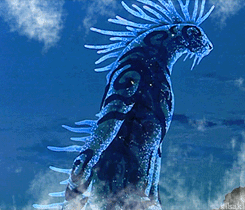Title: A Crown Of WishesAuthor: Roshani ChokshiPublished by: St. Martin GriffinPublication date: 28th March 2017Format: KindleSource: Netgalley ARC
Read my review of the first book in this series HERE
I'm so disappointed that I didn't like this book anymore than the first one.
I have no idea why I expected to? But I did.
It sounded like the story had so much promise, but it just failed to enchant me. It didn't whisk me away on a magical adventure that I could feel myself drowning in.
And that's what I wanted.
The story felt like one huge rush to me.
Things conveniently happened at the right time, and people went along with things without question.
I thought it was unrealistic and lacking a lot of character and world building.
The start of the story focuses on Gauri and Vikram making their way to 'The Otherworld' where they plan to take part in a magical tournament where the winner receives a wish.
These two characters are from enemy kingdoms yet must work together in order to survive.
Sounds great, no?!
It wasn't great.
The constant 'banter' between these two characters was grating and irritating, and their journey seemed rushed with little explanation.
Vikram secretly frees Gauri from the prison where she is being held so that they can enter the tournament and she goes along with it soooo easily. She originally thinks she's going to be killed, but instead she is informed that magic exists and that they're traveling to the mystical Kingdom of Treasures so they can try to win a wish from the King there who also happens to be married to a river.
Does she question this?
No, not really.
She's all "oh okay enemy Prince who I have no reason to trust. Let's go." And off they rush.
And rush, and rush, and rush.
Things do slow down a little once the tournament begins.
And we have some beautiful and interesting imagery through poetically written descriptions.
The folklore and creatures were interesting (when is folklore not interesting?), and the settings are rich and beautiful (if a little confusing).
Yet things are still a little silly, odd, and not questioned.
At one point this happens:
Gauri - "when should we arrive?"
Yakshini - "The floor will turn to fire, my lady. That will be your signal to leave the room."
Gauri - "And when does the tournament start?"
HOLD UP!!!
Why is no one questioning this floor turning to fire business?!
I would be freaking out!
Is this a normal occurrence?
Won't they burn to death?
Why can't they just ring a bell or something?
I have so many questions!
Admittedly the scary fire floor does turn out to be formed out of cool flames.
But no one knew that before fire sprung to life under their feet!
Yet they all act like it's completely normal and expected.
What?
I also found the romance extremely unbelievable.
The two characters go from enemies who can barely stand each other, to being madly in love and besotted with each other over just a few short days.
A week maybe?
Maybe just over a week?
I'm unsure as time kept being conveniently skipped and lost so that the story could progress.
But it definitely was not a believable amount of time.
My favourite part of this book was when Kamala turns up.
Yay Kamala the human eating, demon horse returns!
But she was only around for about 2 or 3 pages *
sigh*
And I did enjoy briefly seeing Maya again too, and she seemed way less annoying and stupid this time around. Hurrah!
But again, that was only for a couple of pages.
And I did like Aasha. She was probably the best character in this one by far!
I really didn't enjoy the first book in this series either, so I have no idea why I expected things to change this time around.
At least we did have a bit more of a plot this's time around. And this instalment may have been a little less annoying perhaps? The characters weren't
quite as stupid as I found Maya to be in The Star-Touched Queen. But I still didn't
love them or really care about what was going to happen to them.
At least this book doesn't take very long to read?
Unpopular opinion #1 goes to me!











































